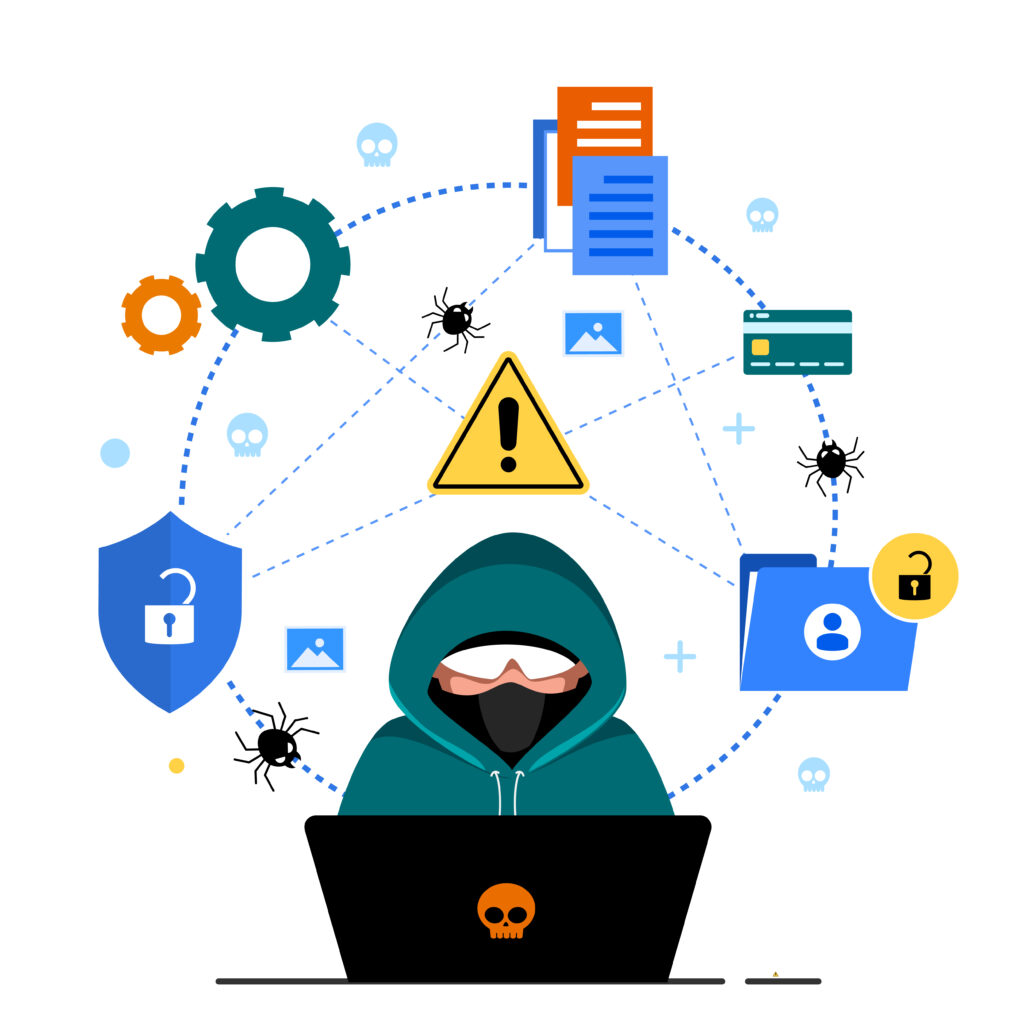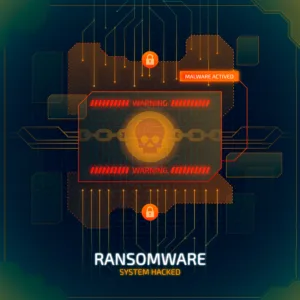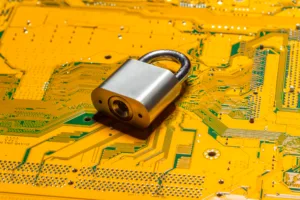
Table of Contents
Top cybersecurity threats in 2023 and its counter-measures.
Introduction – Top Cybersecurity Threats in 2023
In the digital age, cybersecurity has become more important than ever. With advancements in technology, cyber threats continue to evolve and pose significant risks to individuals and organizations. In this blog post, we will explore the top cybersecurity threats expected in 2023 and discuss practical measures you can take to protect yourself and your sensitive information.
A. Ransomware Attacks
In this interconnected digital age, ransomware attacks have emerged as a menacing threat. Cybercriminals employ these malicious tactics to encrypt our valuable data and demand hefty ransoms for its release. These attacks not only disrupt businesses and organizations but also jeopardize the privacy and security of individuals. However, with proper measures and awareness, we can fortify ourselves against this pervasive threat.
Ransomware attacks are one of the top cybersecurity threats which occur when a cybercriminal infiltrates a system and encrypts the victim’s data, rendering it inaccessible. The attacker then demands a ransom, usually in cryptocurrency, in exchange for decrypting the data. These attacks often exploit vulnerabilities in software, phishing emails, or malicious downloads, making it crucial to stay vigilant and informed.
Protective Measures:
1. Regular Backups: Ensure you have a robust backup system in place, regularly backing up your data to offline or cloud storage. This way, even if your data gets encrypted, you can restore it without yielding to the attacker’s demands.
2. Software Updates: Keep your operating system, applications, and antivirus software up to date. Developers frequently release security patches to address vulnerabilities, and by updating promptly, you can prevent potential entry points for cybercriminals.
3. Strong Passwords: Create strong and unique passwords for all your online accounts, including email and banking. Consider using a reputable password manager to generate and store complex passwords securely.
4. Phishing Awareness: Be cautious of suspicious emails, links, and attachments. Verify the sender’s authenticity before clicking on any unfamiliar links or providing sensitive information. When in doubt, reach out to the organization directly through their official channels.
5. Firewall and Antivirus: Activate and maintain a reliable firewall and antivirus software. These tools help detect and block potential threats, providing an additional layer of defense against ransomware attacks.
6. Employee Education: Train employees on best practices for cybersecurity, emphasizing the importance of recognizing and reporting suspicious activities. Regularly update staff on emerging threats and provide guidance on how to handle potential ransomware attacks.
7. Network Segmentation: Segment your network to limit access and contain potential damage. By separating sensitive data and systems from general networks, you can mitigate the spread of ransomware throughout your infrastructure.
8. Incident Response Plan: Develop an incident response plan to outline the steps to be taken in case of a ransomware attack. This plan should include procedures for isolating affected systems, contacting authorities, and notifying relevant stakeholders to mitigate the impact and facilitate a swift recovery. Ransomware attacks have become a persistent menace, targeting both individuals and organizations.
By implementing proactive measures such as regular backups, software updates, strong passwords, and employee education, we can significantly reduce the risk of falling victim to these attacks. Remember, awareness and preparedness are key in safeguarding ourselves and our digital assets from the clutches of cybercriminals. Stay informed, stay secure!
B. Phishing Attacks
Phishing attacks are deceptive techniques employed by cybercriminals to trick individuals into divulging confidential information. These attacks often come in the form of deceptive emails, text messages, or fraudulent websites that mimic trusted entities like banks, online retailers, or social media platforms. The attackers employ psychological manipulation and social engineering tactics to exploit human vulnerabilities, leading victims to unknowingly disclose their sensitive information.
Recognizing Phishing Attempts:
While cybercriminals are becoming increasingly sophisticated, being aware of the common signs of a phishing attempt can help you stay protected.
Below are few red flags to watch out for:
1. Suspicious Sender: Pay attention to the sender’s email address or phone number. Phishing emails often have subtle variations or misspellings that can help identify their illegitimacy.
2. Urgency and Threats: Phishing attempts often create a sense of urgency, pressuring recipients to act quickly. They may threaten account closures or claim unauthorized activity, urging you to take immediate action.
3. Poor Grammar and Spelling: Phishing emails often contain grammatical errors and typos. Legitimate organizations usually maintain professional standards in their communications.
4. Suspicious URLs: Hover your mouse over links in emails or messages without clicking them. This action reveals the actual URL destination. If it differs from what is displayed, it’s likely a phishing attempt.
Protecting Yourself from Phishing Attacks:
Prevention is key when it comes to safeguarding against phishing attacks. Below are some essential measures to protect yourself:
1. Strengthen Security Practices: Ensure your devices have up-to-date antivirus software and firewalls. Regula update operating system and applications to patch any security vulnerabilities.
2. Verify the Sender: Before clicking on links or downloading attachments, verify the sender’s authenticity. Contact the organization directly through official channels to confirm the legitimacy of the communication.
3. Exercise Caution with Personal Information: Be cautious about sharing personal information online. Legitimate organizations typically don’t request sensitive data via email or text messages.
4. Enable Multi-Factor Authentication (MFA): Enable MFA whenever possible, as it adds an extra layer of security. MFA requires additional verification steps beyond just a password, making it harder for attackers to gain unauthorized access.
5. Be Mindful of Social Engineering Techniques: Be skeptical of requests for money, login credentials, or personal information, especially if they create a sense of urgency. Pause and carefully evaluate before taking any action.
6. Educate Yourself and Stay Updated: Stay informed about the latest phishing techniques and tactics. Regularly educate yourself and your family members about potential threats and how to identify and avoid them.
C. Internet of Things (IoT) Vulnerabilities
From smart homes and connected cars to industrial automation and healthcare systems, IoT devices have become an integral part of our daily lives. However, this rapid expansion of IoT also brings along various vulnerabilities that can compromise security and privacy. In this post, we will explore some common IoT vulnerabilities and discuss effective measures to mitigate them.
1. Inadequate Authentication and Authorization:
One of the primary vulnerabilities in IoT systems is weak authentication and authorization mechanisms. Many IoT devices come with default passwords, and users often neglect to change them, leaving them susceptible to unauthorized access. Additionally, the lack of proper authorization protocols can lead to unauthorized users gaining control over devices or accessing sensitive data.
Measures:
– Change default passwords: Always change default passwords upon device setup and choose strong, unique passwords for each device.
– Two-factor authentication: Use two-factor authentication whenever possible to add an extra layer of security.
– Role-based access control: Implement role-based access control to ensure that only authorized individuals can access and control IoT devices.
2. Insecure Network Communications:
IoT devices often rely on wireless communication protocols, such as Wi-Fi or Bluetooth, which can be vulnerable to eavesdropping and unauthorized access. If the communication between the IoT device and the network is not properly secured, it becomes easier for malicious actors to intercept and manipulate data.
Measures:
– Encryption: Always use secure encryption protocols (e.g., SSL/TLS) to protect data transmitted between devices and the network.
– Network segmentation: Separate IoT devices into dedicated network segments to minimize the impact of a compromised device on the entire network.
– Regular firmware updates: Keep devices updated with the latest firmware patches, as they often include security enhancements.
3. Lack of Proper Device Management:
IoT devices require ongoing management and maintenance to ensure their security. However, many users neglect to update their devices or fail to address vulnerabilities in a timely manner. Outdated firmware, unpatched vulnerabilities, and lack of monitoring contribute to the overall risk.
Measures:
– Patch management: Regularly update firmware and software on IoT devices to address any known vulnerabilities.
– Vulnerability scanning: Perform periodic vulnerability scans to identify potential weaknesses and take appropriate measures.
– Device monitoring: Implement monitoring systems to detect unusual activities and potential security breaches.
4. Inadequate Data Security and Privacy:
IoT devices often collect and transmit sensitive data, such as personal information or sensor data. Insufficient data security measures can result in data breaches and privacy violations, compromising both individuals and organizations.
Measures:
– Data encryption: Encrypt sensitive data at rest and in transit to prevent unauthorized access.
– Privacy-by-design: Incorporate privacy considerations during the design and development of IoT devices and services.
– Data minimization: Collect only the necessary data and ensure proper anonymization of collected data. As the Internet of Things continues to evolve, addressing vulnerabilities and ensuring the security and privacy of IoT devices becomes increasingly crucial.
By implementing robust authentication mechanisms, securing network communications, practicing diligent device management, and prioritizing data security and privacy, we can significantly reduce the risks associated with IoT vulnerabilities. Remember, proactive measures and continuous vigilance are essential to protect ourselves and harness the full potential of IoT technology in a secure and trusted manner.
D. Insider Threats
Insider threats are security risks that emanate from individuals within an organization, such as employees, contractors, or business partners, who have been granted privileged access to valuable assets. These insiders possess knowledge of the organization’s systems, processes, and sensitive information, making them capable of causing significant harm if their actions go unchecked.
Types and Motivations:
Insider threats can manifest in various forms. Some common examples include employees leaking confidential information, intentionally sabotaging systems, stealing sensitive data for personal gain, or falling victim to social engineering attacks. It’s important to note that not all insider threats are driven by malicious intent; some may arise from negligence, ignorance, or even inadvertent mistakes.
Preventive Measures:
To minimize the risk of insider threats, organizations must adopt a comprehensive approach that addresses both technical and human factors. Here are some essential measures to consider:
1. Comprehensive Security Policies: Develop clear and well-communicated security policies that outline acceptable use of company resources, data handling practices, and consequences for non-compliance. Regularly educate employees about these policies to ensure awareness and adherence.
2. Access Controls and Monitoring: Implement strict access controls to limit individuals’ permissions to only what is necessary for their roles. Regularly review and update access privileges, ensuring that former employees or contractors have their access promptly revoked. Implement monitoring mechanisms to track and detect suspicious activities within the organization’s systems and networks.
3. Employee Awareness and Training: Conduct regular security awareness training sessions to educate employees about the risks posed by insider threats. Teach them to recognize phishing attempts, social engineering techniques, and the importance of reporting any suspicious activities promptly.
4. Incident Response Plan: Establish a robust incident response plan that outlines the steps to be taken in the event of an insider threat incident. This plan should include procedures for containment, investigation, and recovery, as well as clear communication channels to keep stakeholders informed.
5. Foster a Positive Work Environment: Cultivate a culture of trust and accountability within the organization. Encourage open communication channels, so employees feel comfortable reporting any potential security concerns without fear of repercussions. By fostering a supportive work environment, you can reduce the likelihood of disgruntled employees turning into insider threats.
6. Regular Audits and Assessments: Conduct periodic security audits and assessments to identify vulnerabilities, gaps, and areas for improvement. Engage third-party experts to perform thorough evaluations of your organization’s security posture and provide recommendations for strengthening defenses against insider threats. Insider threats can pose a significant risk to the security and stability of any organization.
By implementing a comprehensive approach that includes security policies, access controls, employee awareness, and incident response planning, you can significantly reduce the likelihood and impact of insider threats. Remember, cybersecurity is an ongoing effort that requires continuous monitoring, adaptation, and vigilance to stay one step ahead of potential risks.
By prioritizing security and fostering a culture of awareness and accountability, you can safeguard your organization against insider threats and ensure the confidentiality, integrity, and availability of your valuable assets.
E. Cloud Security Risks
In today’s digital era, cloud computing has revolutionized the way businesses operate and store data. While the cloud offers numerous benefits, such as scalability and cost-effectiveness, it also introduces its fair share of security risks. Understanding these risks and implementing appropriate measures is crucial to ensure the safety and integrity of your valuable data.
1. Data Breaches:
Cloud data breaches can have severe consequences, resulting in compromised customer information, financial losses, and damage to your organization’s reputation.
To mitigate this risk:
– Encrypt sensitive data before storing it in the cloud.
– Implement strong access controls, including multi-factor authentication.
– Regularly monitor and audit access logs to detect any unauthorized activities promptly.
– Stay updated with security patches and regularly assess the security posture of your cloud provider.
2. Inadequate Identity and Access Management (IAM):
Mismanaged user access and weak identity controls are prime targets for attackers.
To enhance IAM security:
– Establish robust user access policies and enforce the principle of least privilege.
– Implement centralized identity management solutions to streamline access control.
– Regularly review user permissions to ensure they align with job roles and responsibilities.
– Enable multi-factor authentication (MFA) for all user accounts.
3. Insufficient Data Protection:
Protecting your data from unauthorized access, loss, or corruption is vital.
Consider these measures:
– Utilize encryption techniques to safeguard data at rest and in transit.
– Implement strong backup and disaster recovery mechanisms.
– Regularly test data restoration processes to ensure data integrity.
– Educate employees about data protection best practices, such as avoiding sharing sensitive data via unencrypted channels.
4. Vulnerabilities and Exploits:
Security vulnerabilities in cloud infrastructure and applications can be exploited by cybercriminals.
Protect against these risks by:
– Regularly applying security patches and updates to cloud systems and applications.
– Conducting vulnerability assessments and penetration testing.
– Utilizing intrusion detection and prevention systems to monitor network traffic.
– Employing web application firewalls (WAFs) to protect against common attacks.
5. Lack of Cloud Provider Due Diligence:
Choosing a reputable cloud service provider is crucial. Ensure your provider meets the following criteria:
– Transparent security policies and compliance certifications.
– Robust physical and environmental security measures at their data centers.
– Clear data ownership and protection clauses in the service-level agreement (SLA).
– Regular third-party audits to verify compliance and security controls.
While cloud computing offers tremendous advantages, it also brings inherent security risks. By understanding these risks and implementing appropriate measures, you can bolster your cloud security posture and safeguard your critical data. By combining robust identity and access management, data protection strategies, vulnerability mitigation, and diligent cloud provider selection, you can confidently leverage the cloud while keeping potential threats at bay.
Stay proactive, stay vigilant, and stay secure in the cloud. Securing cloud is an ongoing effort, so it’s essential to stay informed about emerging threats and evolving best practices to adapt and strengthen your security measures accordingly.
Conclusion
The cybersecurity landscape is constantly evolving, and staying vigilant is crucial to safeguarding your digital assets and personal information. By understanding the top cybersecurity threats expected in 2023 and adopting preventive measures, you can significantly reduce the risk of falling victim to cyberattacks.
Remember to stay informed, educate yourself and your organization, and prioritize cybersecurity in all your digital interactions. Stay safe online!
Do follow on “https://cybertechworld.co.in” for more such insightful cyber security content.




















I don’t think the title of your article matches the content lol. Just kidding, mainly because I had some doubts after reading the article.
Thanks for sharing. I read many of your blog posts, cool, your blog is very good.
Thank you for your sharing. I am worried that I lack creative ideas. It is your article that makes me full of hope. Thank you. But, I have a question, can you help me?
Can you be more specific about the content of your article? After reading it, I still have some doubts. Hope you can help me.